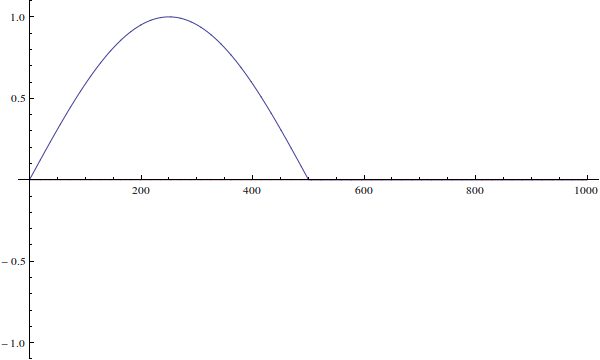1D Infinite Square Well: Box Suddenly Increases in Size. How treat this?
...it makes no sense to calculate any property of the particle with the "initial" wave-function, since this is simply the incorrect wave-function for the new well?
The wavefunction can't be "incorrect for the well". Your wavefunction is just an initial condition for time-dependent Schrödinger equation. Here's how it would evolve if you solve the time-dependent equation (I ignore normalization here):

We see that since the actual particle's wave-function is not defined when $x>L$...
The wavefunction is defined for all $x\in\mathbb R$. It's just zero outside of $(0,L)$ because the potential is infinite there.
the second term will be zero
This remains true, however, because of what I said above.
the wave-functino is normalized for $0<x<L$
Actually, again, the wavefunction is normalized period. It's defined for the whole real line, and zero outside the well, so when you normalized using the integral over the well, it's the same as if you integrated over $\mathbb R$. If it were not this way, your "normalization for some domain" would not make any sense, i.e. it'd not be a normalization at all.
Your further calculation looks OK to me.
I think maybe my difficulty with "visualzing" the problem is that I do not fully understand the expression for $c^2_n$, and how this gives the probability for measuring the energy level $n$.
That this gives the probability for measuring energy level $n$ is known as Born rule. You find projection of your actual wave function onto the eigenstate of energy, namely on state $n$. By Born rule, its magnitude squared is the probability of measuring the system to appear in that eigenstate.
The fact that you used only the unchanged original wavefunction for calculations, even though it almost immediately drastically changes as time goes on, is that despite its change in shape, its coefficients $c_n$ actually only change their phase like $$c_n\propto\exp\left(-\frac i\hbar E_nt\right),$$
but remain the same in magnitude — because the potential is independent of time. Thus you can measure the energy after some time passes, and will still get the same result.
I would forget about the movement of the wall. The potential is the infinite square well of width $2L$ (potential is $\infty$ aside from the region $0 < x < 2L$, where it is $0$), and the wavefunction is $$ \Psi\left(x,t\right) = \sum_{n=1}^\infty c_n \psi_n\left(x\right) \exp\left(-\frac{iE_n t}{\hbar}\right), $$ where $\psi_n\left(x\right) = \sqrt{1/L} \sin\left(n \pi x / 2L\right)$ is the $n$-th stationary state, and $E_n = n^2 \pi^2 \hbar^2 / \left(8 m L^2\right)$ is its energy.
To determine the coefficients $c_n$, we multiply $\Psi\left(x,0\right)$ by $\psi_m^*\left(x\right)$, integrate, and use the orthonormality of the stationary states: $$ \int_0^{2L} dx \ \psi^*_m\left(x\right) \Psi\left(x,0\right) = \sum_{n=1}^\infty c_n \int_0^{2L} dx \ \psi^*_m\left(x\right) \psi_n\left(x\right) = \sum_{n=1}^\infty c_n\delta_{mn} = c_m $$ If that last step is confusing, remember that it is equivalent to using the orthonormality of Cartesian unit vectors $\hat{\bf e}_i \bullet \hat{\bf e}_j = \delta_{ij}$ to determine the components $V_i$ of a 3 dimensional vector $\bf V$ by taking the dot product with $\hat{\bf e}_i$: ${\bf V} \bullet \hat{\bf e}_i = \left(\sum_j V_j \hat{\bf e}_j\right) \bullet \hat{\bf e}_i = \sum_j V_j \delta_{ji} = V_i$.
Anyway, now we use the fact that the initial wavefunction $\Psi\left(x,0\right)$ is the ground state of the infinite square well of width $L$, which is $\sqrt{2/L} \sin\left(\pi x/L\right)$ for $0 < x < L$ and $0$ otherwise. So (note the change in integration range), $$ c_n = \frac{\sqrt{2}}{L} \int_0^{L} dx \ \sin\left(\frac{n \pi x}{ 2L}\right) \sin\left(\frac{\pi x}{L}\right) = \frac{\sqrt{2}}{\pi} \int_0^{\pi} du \ \sin\left(\frac{n u}{2}\right) \sin\left(u\right), $$ or $$ c_1 = \frac{\sqrt{2}}{\pi} \int_0^{\pi} du \ \sin\left(\frac{u}{2}\right) \sin\left(u\right), $$ as you have.